What is the role of speed cushions?
Speed cushions, like speed humps or speed tables, are traffic-calming obstacles that reduce the risk of accidents. It’s a slightly raised surface on the road for speed reduction of the vehicle and allows it to pass unaffectedly.
Vertical traffic calming types of equipment are commonly installed on public roads to increase traffic and pedestrian safety. They are installed in high-traffic volume areas with a signboard near them to inform them about their presence.
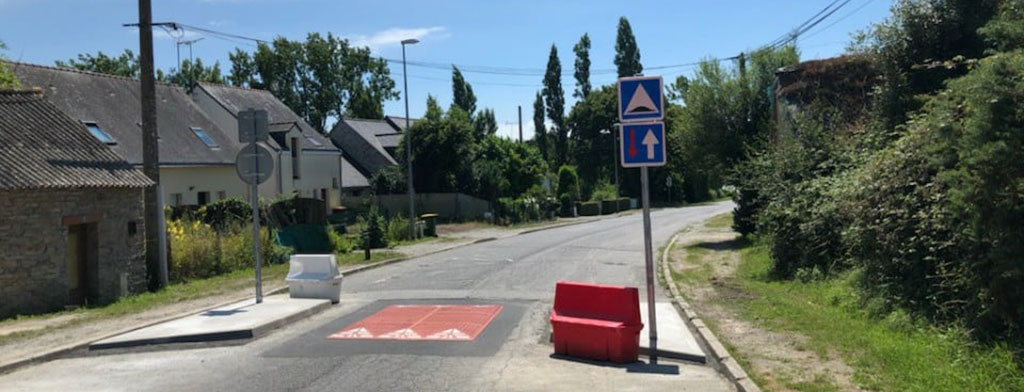
Do speed cushions really work?
The greatest factor that contributes to road accidents is speed. Speed cushions effectively reduce the speed of an overspeeding vehicle, and placing a series of traffic-management equipment on the urban road limits the vehicle to travel at an average speed of only 22 mph between two-speed cushions.
The vehicle has control over the vehicle since it hasn’t travelled more than 17 miles per hour of the distance from the last speed bump. Continuously spaced bumps limit the speed of the vehicle. Therefore, drivers can save themselves from an accident ahead of time. In case of vehicle crashes, there is a lower chance of the fatality of a pedestrian.
Transportation engineers use traffic engineering concepts to install speed bumps in the road that help control traffic in slow zone areas without police enforcement. They are placed in areas with the highest number of pedestrians, such as parking lots, ramps, and crosswalks.
This is one of the most effective calming measures to slow traffic. The speed bumps with rumbled strips for pavement markings decrease the vehicle’s acceleration, reducing the high percentile risk of accidents.
Cyclists and motorists can easily pass through the rumble pavements of these traffic control devices. If a driver does not reduce the speed at stop signs, traffic signals, cones, red lights, speed signs or a reflective bump, he gets a sudden jerk as the tires hit the hump.
Placing an offset speed hump on a high-traffic road to control traffic will increase the risks of road hazards. Choose speed cushions that are best suitable for the area where they are installed.
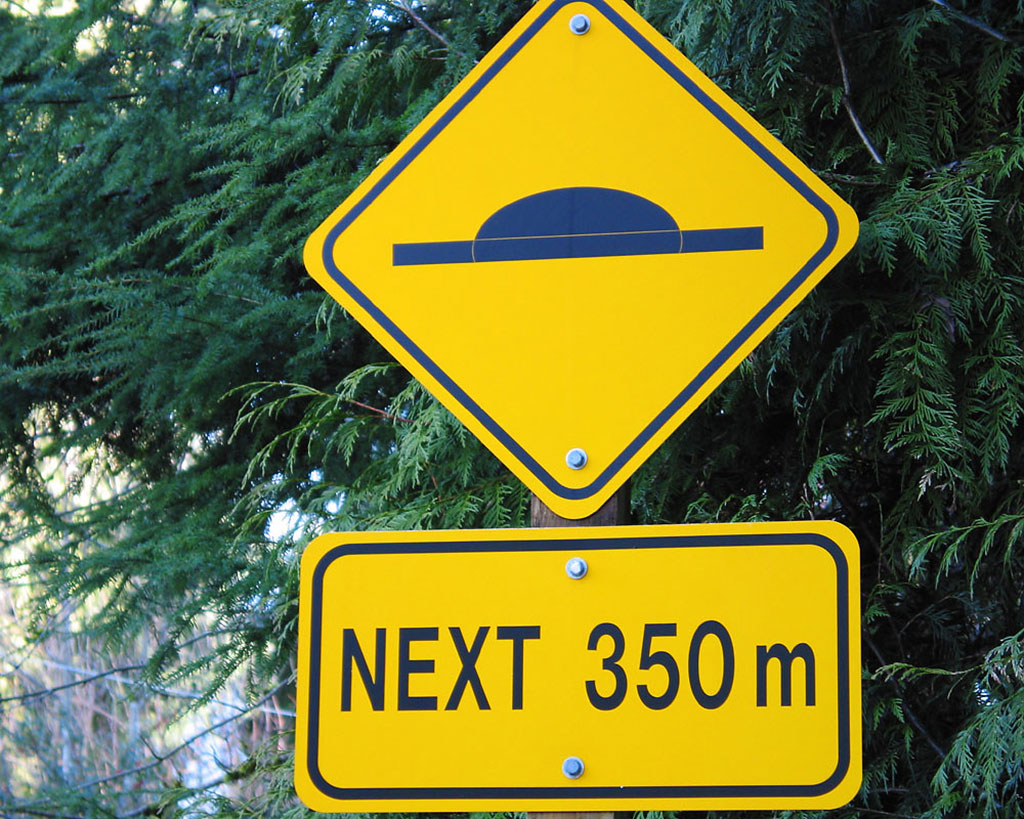
Learn more: Do speed cushions really work?
Speed cushions advantages vs. disadvantages
Speed cushions have played a major role in reducing traffic-related hazards. They are one of the most important traffic management devices that have helped control vehicle speed in slow zone areas.
They have many types, each one defined for a specific purpose and area. Their advantages and disadvantages depend on the types of speed cushions that are used.
Positive points of using traffic safety equipment
You can refer to the below positive points:
- Buses or large vehicles can easily pass the rubber crossings without getting affected. They can easily cross the hump through the pavement.
- They are comparatively more effective than any other technique to calm traffic. Horizontal treatments also help limit vehicle speed, but vertical speed breakers are better in terms of their dimensions. Also, they help in drainage.
- Emergency vehicles such as fire trucks and ambulances can comfortably pass through these speed cushions. This is one of the biggest advantages of using a speed cushion to reduce traffic speed. In critical situations, they can reach the destined location quickly without wasting a second.
- A bicyclist can easily avoid bumps in the road.
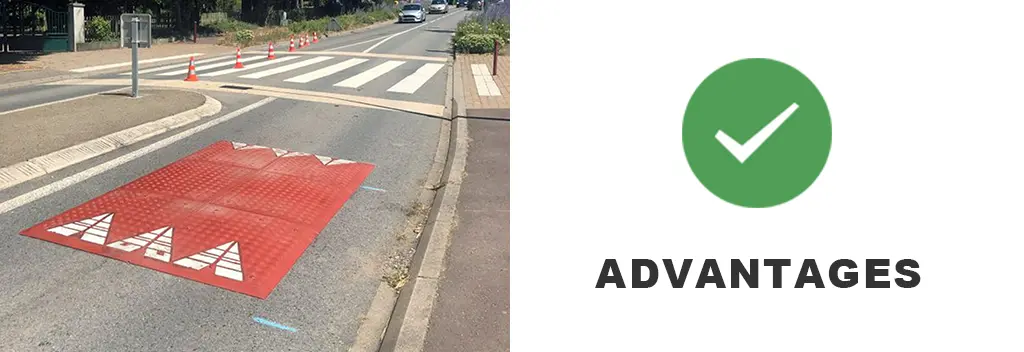
You have already read a good part of this article, 👀
We've
got the impression that you like it. 🙂
👇🏻
IF YOU ARE LOOKING TO WORK DIRECTLY WITH A MANUFACTURER,
FEEL FREE TO CONTACT US. WE ARE VERY HAPPY TO HELP!
Disadvantages of using speed cushions
Although the disadvantages of using speed cushions are not serious ones, below are some downsides of using them for speed reduction:
- They can be installed in residential areas, which create noise that disturbs the residents of that area.
- Speed cushions having wheels cut at a greater distance are less effective for emergency vehicles.
- The installation process is slightly expensive. The road area may need to be resurfaced before placing the speed cushions.
- Their installation may cause some of the traffic to change routes. This can result in high traffic in other areas.
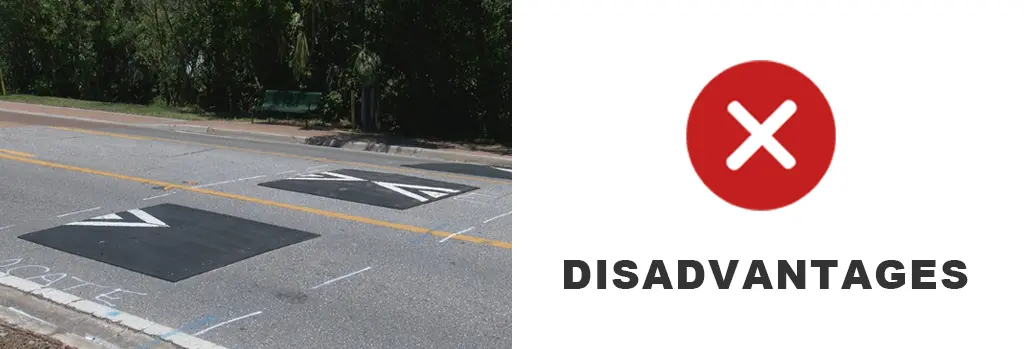
Learn more: Speed cushions advantages vs. disadvantages.
Do speed cushions slow down emergency vehicles?
Speed cushions are one of the best traffic calming measures to reduce the speed of private vehicles while allowing emergency vehicles to pass unaffected. They are designed in a way to accommodate large vehicles.
Emergency vehicles have wide axles, allowing them to easily cross the wheel and cut into speed bumps. This saves time in critical situations when each second is very precious.
Despite its structure, it is important to focus on the impact of the location where a speed bump is being installed to manage the traffic flow. In some countries, emergency vehicles are not very wide as they can enter a narrow street.
Therefore, they have nearly the same dimensions as personal vehicles. Speed cushion dimensions are not very accommodating in such cases. In comparison, emergency vehicles in other countries have a greater axle, making them ideal for speed tables.
Research shows that even though speed cushions are not suitable for countries with small axle vehicles, they still have negligible effects than smaller vehicles. It is best to consult the local emergency vehicle providers regarding the dimensions of the vehicles.
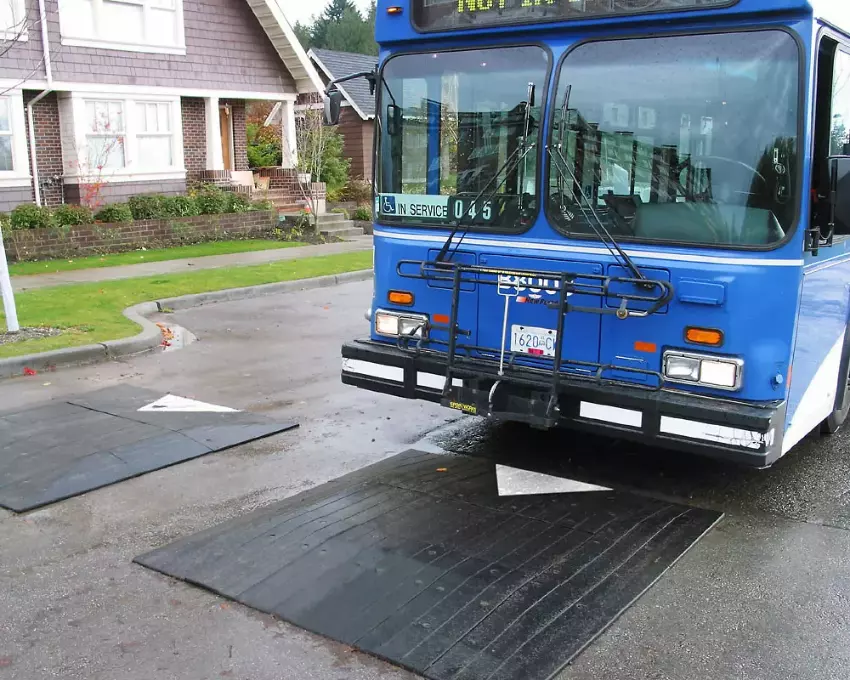
Learn more: Do speed cushions slow down emergency vehicles?
Variations in the speed cushions
Speed cushions come in a variety, depending on the location of the instalment and the material used in their manufacturing, i.e., recycled plastic, recycled rubber, steel, and concrete. Listed below are the two important variations in speed cushions.
Speed slot is a variation of these speed control cushions that is suitable for an emergency vehicle. They are designed with spaces between the humps for the wheels of large vehicles.
This enables emergency vehicles, such as an ambulance or a fire truck, to cross the path easily but resist other vehicles having the same dimensions.
The only disadvantage of this type of speed limit is that it causes the vehicle to pass through the centre of the lane, which may increase the chances of colliding with other vehicles on the road. Another drawback is that it may hit the middle hump while crossing the speed cushion.
Offset speed cushions are installed so that they appear alternatively on the opposing lane. The distance between the two cushions allows emergency vehicles to move in the middle of the lane during serious situations.
However, vehicles passing through this variation are at a greater risk of hitting another vehicle because of the high speed and moving in the centre of the roadway.
Besides this, there is no surety that the vehicle in the opposite lane will move towards the side to give way to the overspeeding emergency vehicle.
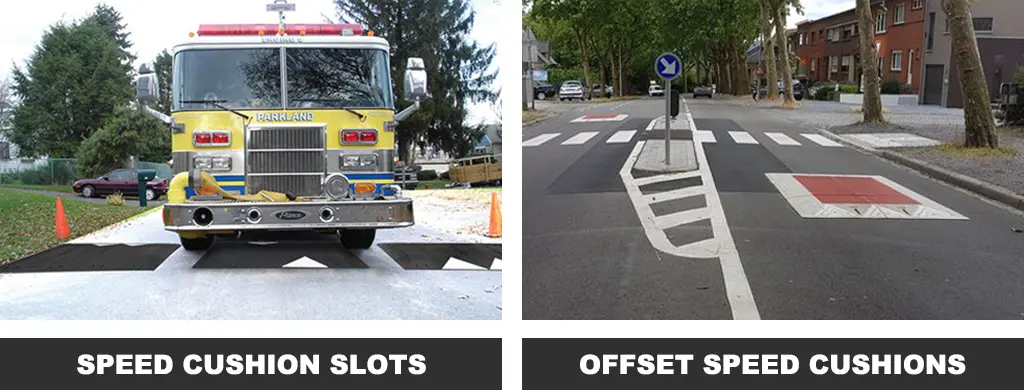
Conclusion
Speed cushions, traffic cones, road bumps, traffic signs, stop signs, speed-limit signs, ramps, traffic signals, and speed breakers are all traffic-control measures used by the Department of Transportation to ensure traffic safety in slow traffic zone areas.
Speed cushions and speed humps curb traffic speed in areas and lanes with a higher chance of road collisions like pedestrian crossings, cut-through, sidewalks, roundabouts, crosswalks, road intersections, and city streets.
Speed bumps must be installed with a slow-down signboard to inform drivers about their presence. These rubber-made speed bumps have many variations depending on the place of installation.
👇🏻
IF YOU ARE LOOKING TO WORK DIRECTLY WITH A MANUFACTURER,
FEEL FREE TO CONTACT US. WE ARE VERY HAPPY TO HELP!





















